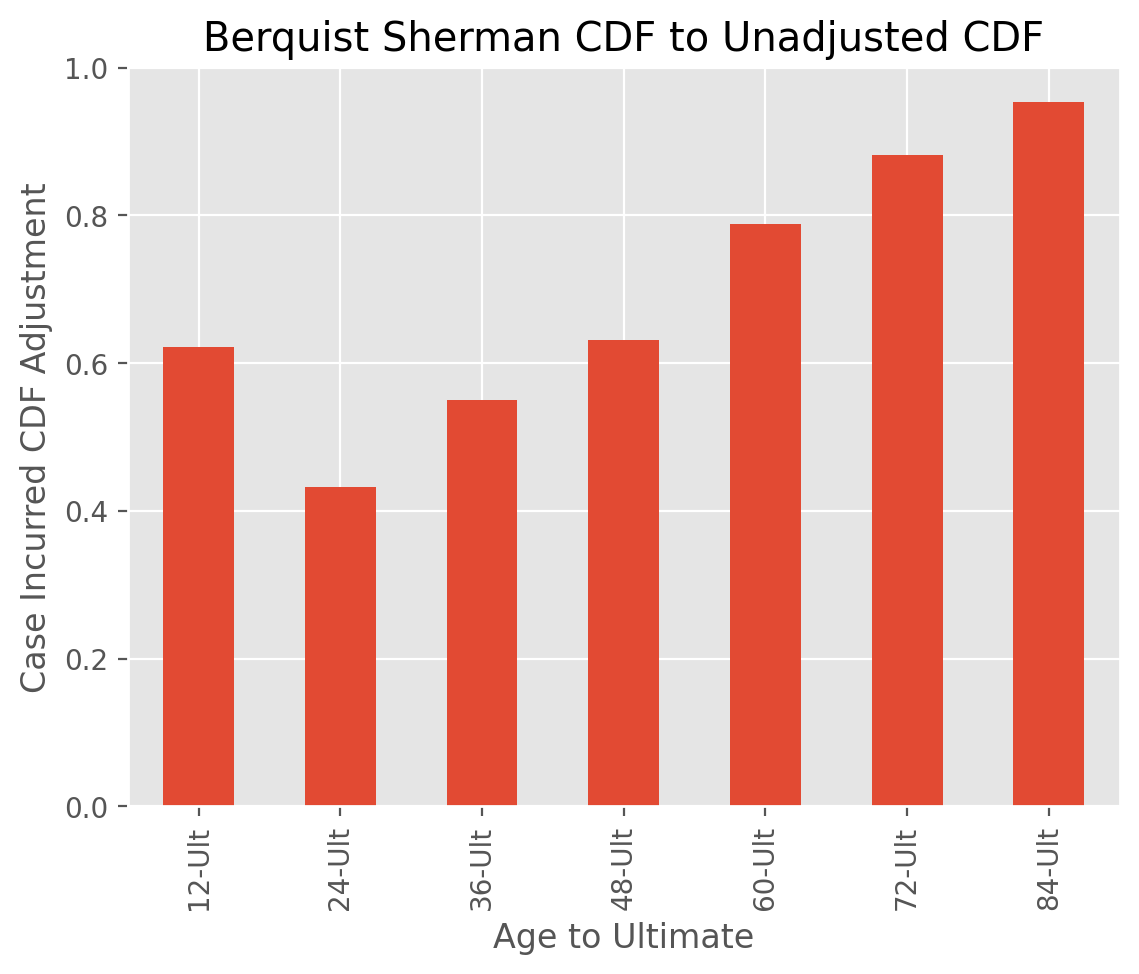BerquistSherman Adjustment#
import chainladder as cl
This example demonstrates the adjustment to case reserves using the Berquist-Sherman method. A key assumption, and highly sensitive one at that, is the selection of a trend factor representative of the trend in average open case reserves from year to year.
# Load data
triangle = cl.load_sample('berqsherm').loc['MedMal']
# Specify Berquist-Sherman model
berq = cl.BerquistSherman(
paid_amount='Paid', incurred_amount='Incurred',
reported_count='Reported', closed_count='Closed',
trend=0.15)
# Adjust our triangle data
berq_triangle = berq.fit_transform(triangle)
berq_cdf = cl.Development().fit(berq_triangle['Incurred']).cdf_
orig_cdf = cl.Development().fit(triangle['Incurred']).cdf_
Show code cell source
import matplotlib.pyplot as plt
plt.style.use('ggplot')
%config InlineBackend.figure_format = 'retina'
# Plot the results
ax = (berq_cdf / orig_cdf).T.plot(
kind='bar', grid=True, legend=False,
title='Berquist Sherman CDF to Unadjusted CDF',
xlabel='Age to Ultimate',
ylabel='Case Incurred CDF Adjustment');

